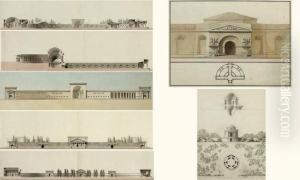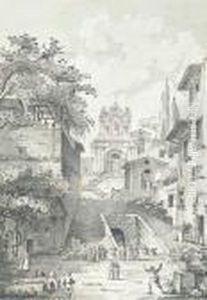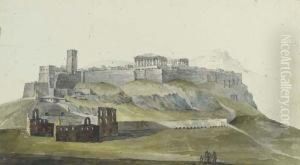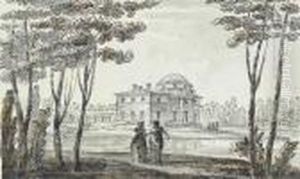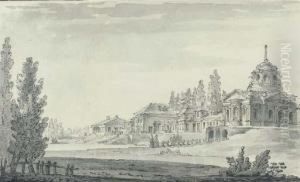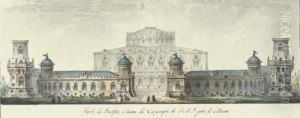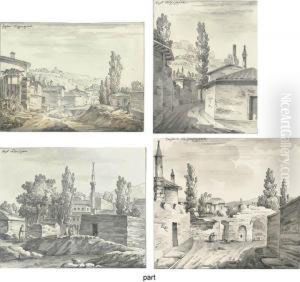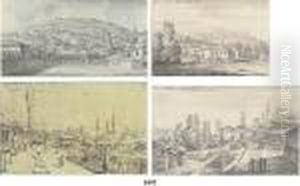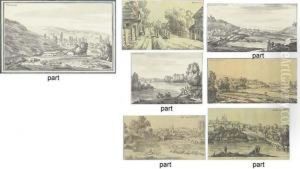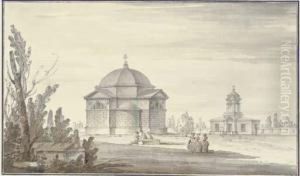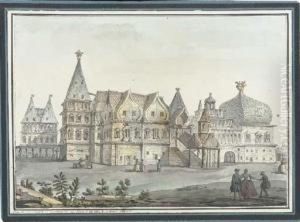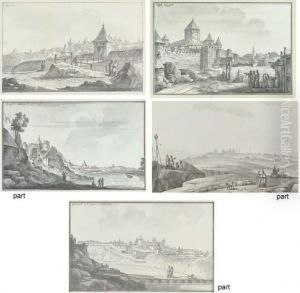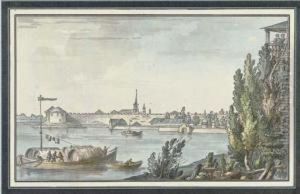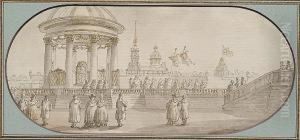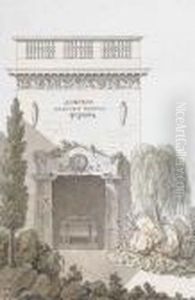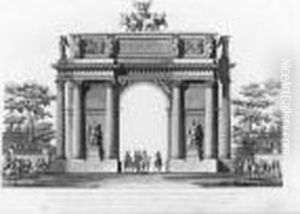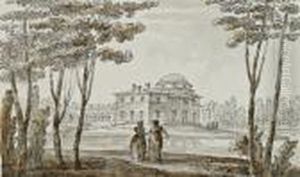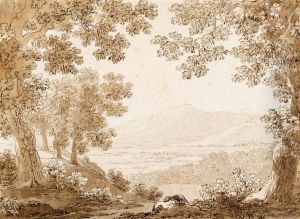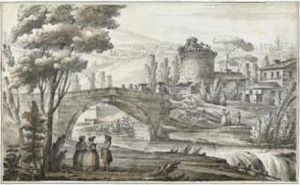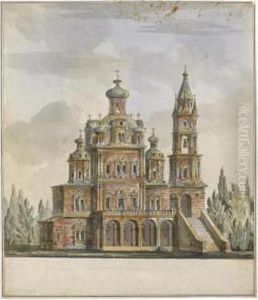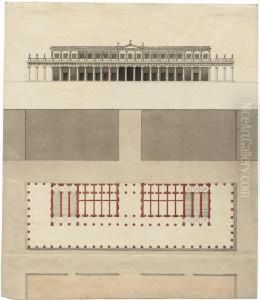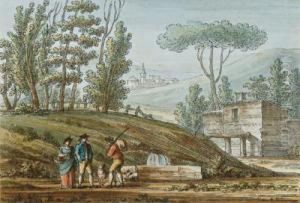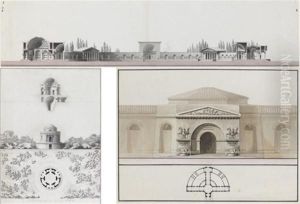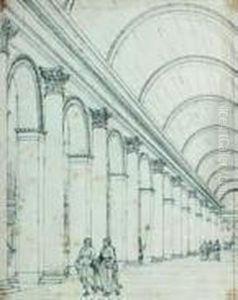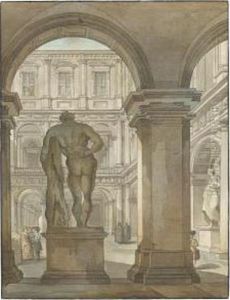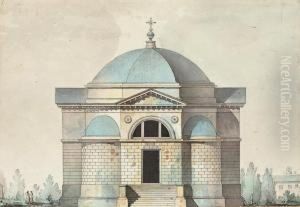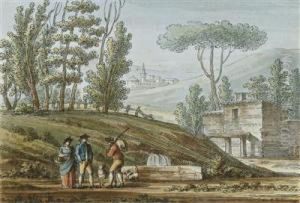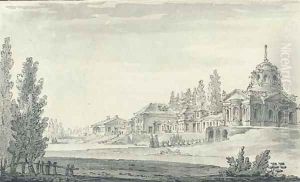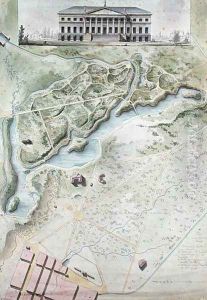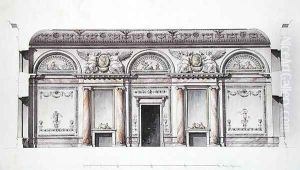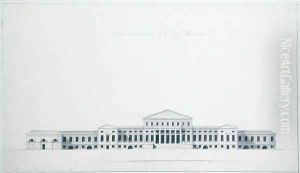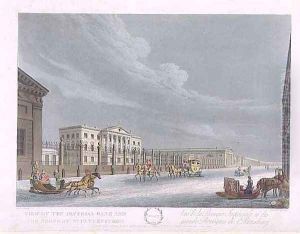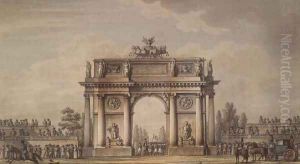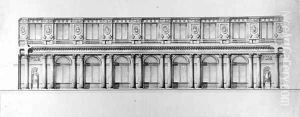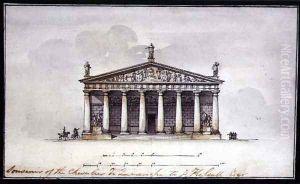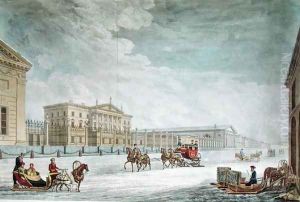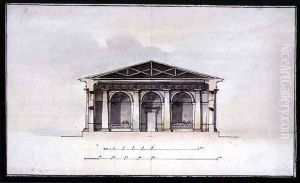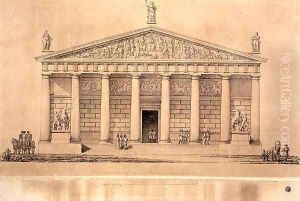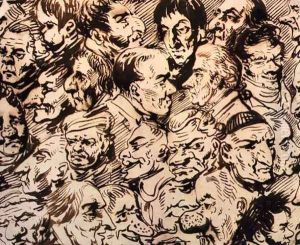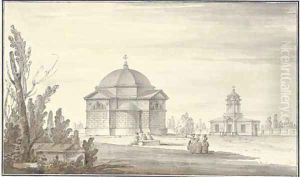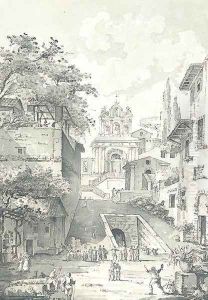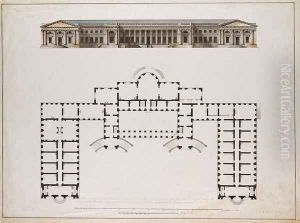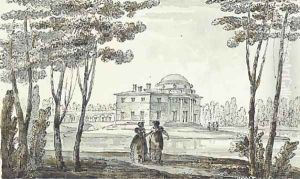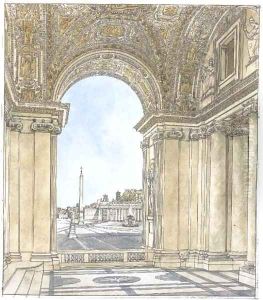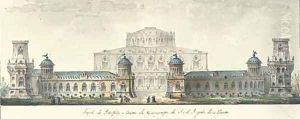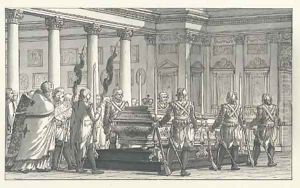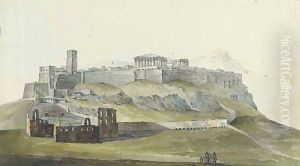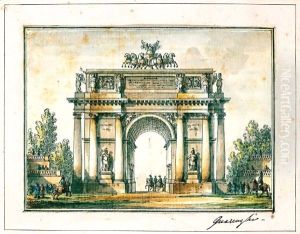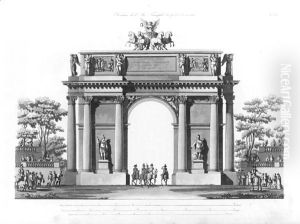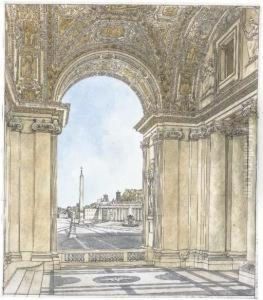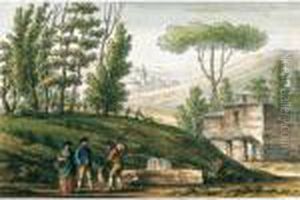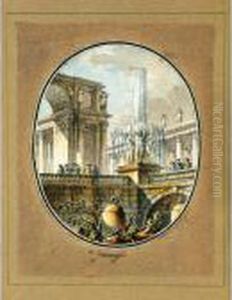Giacomo Quarenghi Paintings
Giacomo Quarenghi was an Italian architect and painter, who is considered one of the foremost neoclassical architects of his time. He was born on September 20, 1744, in Bergamo, Italy, and initially trained as a painter. However, his interests later shifted towards architecture, and he went on to study in Rome, where he was influenced by the works of classical antiquity and the Renaissance.
Quarenghi's architectural career flourished when he moved to Russia at the invitation of Catherine the Great in 1781. He became the leading architect in Saint Petersburg, the Russian capital at the time. His designs reflected his Italian roots blended with the neoclassical style that was popular in Russia during the late 18th century. He was responsible for designing many significant buildings in and around Saint Petersburg, including the Hermitage Theatre, one of the first buildings in Russia in the Palladian style, the State Bank building, and various structures within the Peterhof Palace complex.
Throughout his career in Russia, Quarenghi was highly regarded and became the architect of choice for many Russian nobles. His work had a lasting influence on Russian architecture, and he was known for his clear and harmonious proportions, as well as his use of classical architectural vocabulary.
Quarenghi's contribution to architecture was not limited to Russia, as his designs were also influential in his native Italy and other parts of Europe. Despite this, he faced some criticism during his lifetime for being too academic and not sufficiently innovative.
Giacomo Quarenghi died on March 18, 1817, in Saint Petersburg. He left behind a legacy as a key figure in the spread of neoclassical architecture in Russia and as one of the most prominent architects of his era. His works continue to be studied and admired for their elegance and adherence to classical principles.
